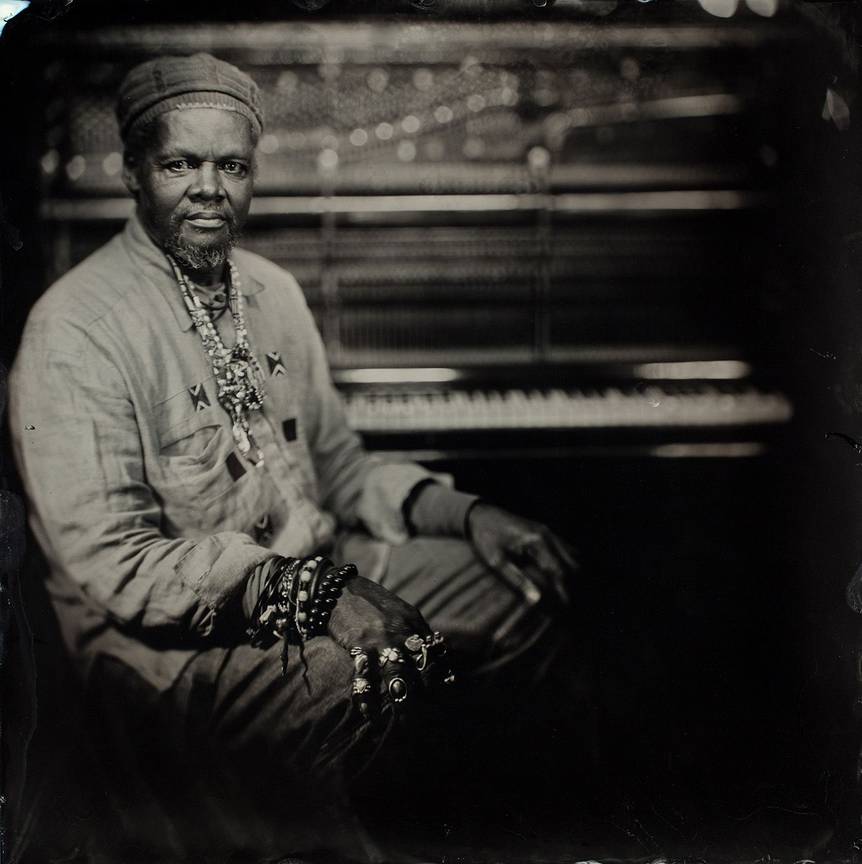“The archive of your brain is within you.” Lonnie Holley repeats the sentence to make sure that we understood it properly.

© Timothy Duffy
Lonnie Holley's medicine sounds at Botanique
Also read: Geordie Greep ontbindt zijn zappaiaanse duivels op het nieuwe festival Les Nuits Weekender
“If you hear my music, it is taking you back to my babyhood, to that little Tonky McElroy that was raised by foster parents and grew up at the state fairground and the drive-in theatre, to me being abused day after day, being imprisoned in the Alabama Industrial School for Negro Children [which in previous interviews he has repeatedly described as a slave camp, tp]. But once I put all that (negative) energy out of my brain and into works of art, my life changed,” continues the 69-year-old African American artist who was kidnapped by a family acquaintance and traded for liquor 65 years ago.
The traumas of his youth in the segregated city of Birmingham, Alabama can now be seen in the form of sandstone statues and assemblages of found materials in famous American museums, and you can hear about them on his three spoken word albums that are full of poetic reflections and improvised piano playing. “Every time we turn around, we receive another invitation from Europe, so we are doing something right,” Holley reflects modestly on his late musical breakthrough when we FaceTime him at his home in Atlanta.
“I see my music as another way of exhibiting"
Childhood memories
Due to the meditative power of his impassioned words, more and more people are embracing his message. “I like the way you put it: meditative. But I prefer to call it ‘medicine sounds’. Music allows us to heal our universal purpose more quickly than other art forms. It has the effect of throwing a stone in the ocean, creating waves.” Holley has been making music and singing since he was a little kid, he continues. “But before 2010 I never got into a studio space. Now, I see my music as another avenue of exhibiting. I always looked at myself as the artist that would be put on show and judged.”
This assumption likewise goes back to his childhood: “At the state fairground, animals were kept in cages, and burlesque dancers performed in little galleries. I refer to it in a piece called African in a Cage Gasping for Air (1988).” It was made out of garbage.
A more recent work, Blood On the Rock Pile (2003), refers to being beaten up when in reformatory school, only now the blood is replaced by red paint. In just the same vein, songs like “I Woke Up in a Fucked-Up America” and “I Snuck Off the Slave Ship”, both on his last album MITH (2018), bring to mind some of the darkest moments in his country’s history and try to offer an antidote for an uncertain future that might be shaped by another series of white supremacists. “Remember Dr. (Martin Luther) King said: ‘I’ve been to the mountain top’, but he never said how many mountain tops we would have to struggle over.”
Read more about: Sint-Joost-ten-Node , Muziek , Cultuurnieuws , lonny holley , Botanique , music




Fijn dat je wil reageren. Wie reageert, gaat akkoord met onze huisregels. Hoe reageren via Disqus? Een woordje uitleg.